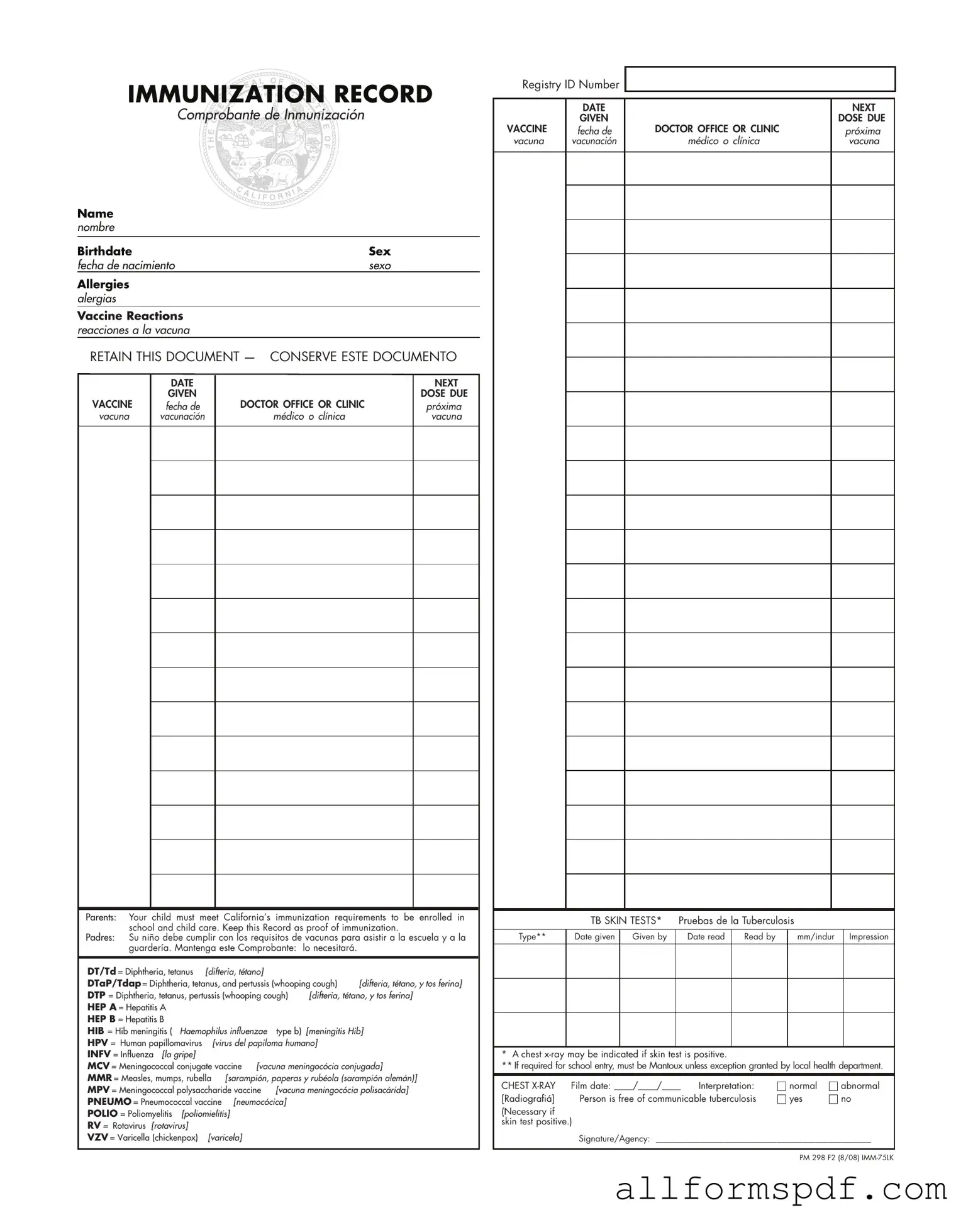Filling out the Immunization Record form can seem straightforward, but several common mistakes can lead to complications. One frequent error is failing to provide accurate personal information. The form requires the child's name, birthdate, and sex. Omitting or misspelling any of these details can create discrepancies that may affect enrollment in school or child care.
Another mistake involves neglecting to list all relevant allergies. Parents should ensure that any known allergies are clearly noted on the form. This information is crucial for healthcare providers to avoid administering vaccines that could trigger allergic reactions.
Inaccurate documentation of vaccine doses is also a common issue. Parents must carefully record the date each vaccine was given and the next dose due. Missing this information can lead to confusion about the child's immunization schedule and may result in missed vaccinations.
Some individuals fail to retain the document as instructed. The form states, “RETAIN THIS DOCUMENT”, yet many parents do not keep a copy. This record serves as proof of immunization and is necessary for school enrollment, so it should be stored in a safe place.
Another frequent oversight is not verifying the signature or agency information. The form requires a signature from the administering healthcare provider. Without this, the record may not be considered valid, potentially complicating school entry.
Parents sometimes overlook the importance of the TB skin test section. If a TB skin test is required, it must be accurately filled out, including the type and dates of administration and reading. Missing this information can lead to delays in the enrollment process.
Lastly, some individuals do not check for additional requirements specific to their local health department. Each jurisdiction may have different immunization requirements. Parents should consult local guidelines to ensure compliance, avoiding unnecessary issues during school registration.
